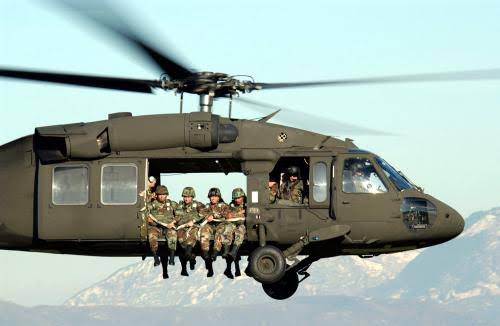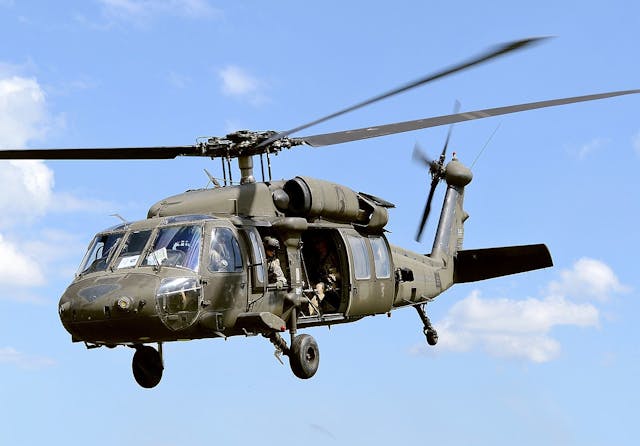UH 60 Black Hawk: Army Helicopter Attributes and Capabilities
UH 60 Black Hawk: Army Helicopter Attributes and Capabilities
Blog Article
A Comprehensive Guide to the Maintenance and Treatment of Airplane for Longevity
The durability of an aircraft hinges considerably on its maintenance and treatment, requiring an organized technique to make sure optimum performance and security. Understanding the ins and outs of these methods can be complicated; consequently, it is vital to discover the crucial components that contribute to effective aircraft treatment and the effects of disregarding these duties.
Importance of Regular Upkeep
Routine upkeep is essential for the security, performance, and long life of airplane. A systematic approach to maintenance makes sure that all elements function efficiently, thus decreasing the risk of mechanical failing throughout operation. Regular examinations and maintenance allow specialists to determine possible problems before they rise right into substantial issues, making certain that the aircraft remains in conformity with air travel laws.
Additionally, keeping an airplane according to the producer's standards is critical for maintaining its worth. A well-documented upkeep background can enhance resale potential customers and impart confidence in prospective buyers. Additionally, routine maintenance adds to operational effectiveness, as it assists to maximize gas usage and performance metrics, bring about set you back savings in time.
Additionally, routine upkeep adds to the total safety of flight procedures (uh 60). By dealing with deterioration without delay, operators can minimize dangers linked with aging airplane systems. This proactive approach not only secures the lives of travelers and crew yet likewise safeguards the airplane itself versus tragic failings

Daily Assessment Checklist
How can pilots and upkeep staffs guarantee the aircraft remains in optimal condition before each flight? The answer depends on a complete daily inspection list, which acts as an essential procedure to determine prospective concerns that could compromise security and performance. This list needs to include several crucial areas, consisting of exterior and indoor evaluations, as well as practical checks of important systems.
Beginning with the outside, crews must evaluate the airframe for any kind of visible damage, leaks, or indications of rust. Attention must be paid to control surface areas, landing gear, and the problem of tires. Moving to the interior, the crew needs to confirm that all tools and controls are functional, ensuring that electronic systems are working appropriately.

In addition to architectural checks, it is necessary to examine fuel degrees and confirm that all required papers, consisting of registration and weight and equilibrium information, depend on date. An evaluation of emergency situation tools, including life vests and fire extinguishers, must be carried out to make sure conformity with safety guidelines. By faithfully following this daily assessment list, pilots and maintenance crews can significantly improve the security and integrity of their aircraft.
Scheduled Maintenance Programs
Scheduled maintenance programs are important for the lasting safety and efficiency of aircraft operations. These programs are created to make sure that all aircraft elements undertake routine examinations, maintenance, and needed repair work at established intervals. By sticking to a structured maintenance timetable, operators can substantially reduce the danger of in-flight failings, boost airplane dependability, and expand the lifespan of important parts.
Typically, scheduled maintenance is classified right into different degrees, consisting of A, D, c, and b checks, each with distinctive needs and thoroughness. A checks are normally much more regular and concentrate on basic visual assessments and minor repairs, while D checks are more thorough and happen much less frequently, including substantial disassembly and overhaul of the airplane.
Governing bodies, such as the FAA and EASA, required compliance with specific maintenance schedules based on aircraft type and this post usage. Operators has to keep careful records of all upkeep executed to demonstrate conformity and facilitate examinations. Additionally, the assimilation of predictive upkeep innovations can further boost the efficiency of scheduled programs by determining prospective issues before they rise, thereby ensuring that airplane stay in ideal problem and prepared for risk-free procedures.
Take Care Of Airplane Interiors
Caring for aircraft interiors is vital not only for traveler convenience yet also for keeping the overall worth and security of the aircraft. Regular cleansing and maintenance of the indoor parts add considerably to a favorable flying experience while protecting the airplane's visual appeal.
To make certain ideal treatment, it is vital to establish a routine cleaning routine that includes vacuuming carpetings, wiping down surfaces, and disinfecting high-touch locations. Furniture and seats should be examined for damage, with any damage promptly addressed to stop additional degeneration. Additionally, focus needs to be offered to the Check Out Your URL galley and lavatory locations, which need complete cleansing and restocking of products to keep health.
Additionally, using suitable cleansing agents is vital; rough chemicals can damage surfaces and products, so it is advisable to use items particularly developed for airplane insides. Routine evaluations ought to additionally be carried out to recognize any maintenance requires, such as changing worn-out seat covers or repairing window tones. By focusing article on the treatment of airplane insides, drivers can improve the general passenger experience and safeguard the investment in their airplane.
Recognizing Regulatory Conformity
Regulative compliance is an important aspect of airplane maintenance, usually calling for operators to comply with a complicated framework of local, national, and global criteria. This structure is mostly established by air travel governing bodies such as the Federal Aviation Management (FAA) in the United States and the European Union Air Travel Safety And Security Company (EASA) in Europe - uh 60. These organizations set forth guidelines that control various aspects of airplane maintenance, including airworthiness, safety procedures, and functional procedures

Additionally, drivers should remain educated concerning adjustments in policies and participate in training programs to guarantee that their team is knowledgeable about conformity demands. Failing to conform with these regulations can lead to serious charges, consisting of penalties, grounding of airplane, or loss of qualification. Consequently, understanding and sticking to regulatory compliance is extremely important for the long life and safety of aircraft operations.
Verdict
In final thought, the upkeep and treatment of aircraft are paramount for making certain durability, safety and security, and operational performance. Attention to the airplane's interior and conformity with regulative criteria significantly add to maintaining its value.
The longevity of an aircraft hinges dramatically on its maintenance and treatment, necessitating an organized strategy to guarantee optimum efficiency and security. By carefully following this daily assessment list, pilots and maintenance crews can considerably boost the security and reliability of their aircraft.
These programs are developed to ensure that all aircraft elements go through regular inspections, maintenance, and essential repairs at established intervals. By prioritizing the treatment of airplane insides, drivers can improve the overall passenger experience and secure the financial investment in their aircraft.
In conclusion, the maintenance and treatment of aircraft are critical for making certain longevity, safety and security, and functional effectiveness.
Report this page